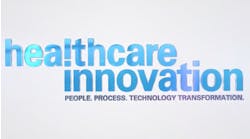According to a study published in the Journal of General Internal Medicine, retrospective reporting on performance does very little to help clinicians understand how to improve care or help them take the right action to do so.
Indeed, to effect real change and achieve the Triple Aim of improved patient experience, improved health of populations and reduced per capita cost of care, healthcare organizations need to move beyond retrospective reporting. They need both the ability to track and measure quality of care and the ability to identify and act on opportunities for improvement.
Organizations face challenges, however, in the execution of quality initiatives due to disparate data and documentation systems, inefficient clinician workflows and time-consuming measurement processes. Adding to these challenges are the quality demands of risk-based contracts that have grown with the advent of population health management. In addition to driving more emphasis on patient outcomes, however, population health is driving innovative new health information technology solutions that help organizations improve quality by connecting technology, processes, clinicians and patients.
Foundation for quality improvement
In order for providers to move from reporting to real change, they need to understand their patients, populations and performance. Advanced data aggregation, measure calculation and healthcare analytics are critical components. They enable healthcare organizations to compute key patient safety and quality measures, benchmark performance at the institution and provider level, and explore data at a cohort and patient level to identify and close quality gaps. Equally important is delivering intelligence to clinicians within their workflows. Combined, these elements form the foundation for true quality improvement.
Key functionality for quality improvement includes the following:
Data aggregation. The first requirement in improving healthcare quality is to be able to aggregate data from multiple sources. Because most healthcare organizations use software from multiple vendors, it’s important that quality systems interoperate with all of them. They need to be able to pull data from disparate systems – clinical, financial, claims, Hospital Consumer Assessment of Healthcare Providers and Systems (HCAHPS) survey data, etc. They then need to transform the data into a consistent and meaningful format and store that data in a repository for convenient access. Because access to information from disparate sources is crucial, they need to aggregate and normalize data regardless of system complexity, varying software versions, etc. And because making timely decisions based upon relevant information is crucial to improving quality, data updates should be in near real time.
Measure calculation. Next, healthcare organizations need to automatically compute key patient safety and various quality measures, including accountable care organization (ACO) measures as defined by the Centers for Medicare and Medicaid Services (CMS) and the Healthcare Effectiveness Data and Information Set (HEDIS). It’s also important that they compare their own performance relative to industry benchmarks or institution-specific targets per measure.
Analytics. Since sophisticated analytics is critical to understanding the gaps in care, healthcare organizations require multi-dimensional root cause analysis capabilities that integrate with and inform care management and patient engagement applications. Like data aggregation, they should run on near real-time data so the results are relevant and can be acted upon quickly.
Intelligence within workflows. Finally, it’s important to make that information actionable by quickly identifying where care gaps are reducing quality measures at the point of care for clinicians. Presenting this information in this manner enables clinicians to efficiently address those gaps. With rapid and intuitive access to this data, clinicians can also gain insights about the actions needed to improve care management, patient engagement workflows and measurement processes proactively so they can improve performance on them.
The good news is that the emergence of population health management has driven advances in the health IT solutions that support it. Beyond measuring and reporting quality, these solutions provide the means to enhance quality improvement efforts. Because of this, healthcare organizations have a tremendous opportunity to improve patient outcomes and benefit from risk-based contracts by pursuing quality improvement initiatives. Organizations that are able to connect their technology, processes, clinicians and patients may be able to improve quality and differentiate themselves in the market – and achieve the Triple Aim.



